Coastal missile complex "Redoubt"
Even before the initial project of the P-35 ship-launched cruise missile was completed, it was decided to create a coastal anti-ship tactical missile system at its base to destroy surface targets at a distance of up to several hundred kilometers from the coast. The decree on the beginning of the creation of such a system was issued 16 August 1960 year. By this time, the P-35 rocket had already entered the preliminary tests in an incomplete configuration. In addition, the development of a number of auxiliary systems that were to ensure the combat operation of the ship complex was almost completed. Thus, there was a real opportunity to a certain extent to simplify and accelerate the work on the coastal complex.
The development of a new project was entrusted to OKB-52 under the direction of V.N. Chelomey, who created all previous products of the family on the basis of П-5. In addition, several other organizations were involved in the work, whose task was the development and supply of some components. The project of the onshore complex received the symbol “Redut”. Rocket for him was designated as P-35B.
The main element of the Redut complex was to be an anti-ship missile P-35B, created on the basis of the original P-35. From the base product, the new rocket had to differ in the composition of the onboard equipment and some other minor changes. At the same time, the general scheme and principles of operation of the rocket should have remained the same. The appearance of the product associated with the specificity of aerodynamics has not changed either.
The P-35D rocket with a total length of about 10 m and with a wingspan of 2,6 m was a further development of the ideas embodied in the P-5 / 6 projects and was based on the design of the base P-35. It had an elongated streamlined fuselage with a pointed head fairing and an even tail section to accommodate the main engine nozzle. Due to the use of a turbojet engine, the rocket got an air intake with a conical central body, located under the fuselage bottom.
Like other products of the family, the P-35B was to be equipped with a swept folding wing. In order to reduce the dimensions of the rocket in the transport position, the wing was divided into a small center-section and swivel arms. In the transport position, the wing consoles turned down and placed on the sides of the fuselage, so that the maximum width of the product did not exceed 1,6 m. After leaving the launch canister at start-up, the special automatics had to lift the consoles and fix them in a horizontal position.
Control of the rocket in flight should have been carried out using a set of steering wheels in the rear fuselage. There were all-turn stabilizers, elevators, and the rocket had to maneuver along the course using the rudder on the keel. The latter was located under the fuselage, next to it was planned to mount a double starting solid-fuel engine.
The weight parameters of the rocket for the onshore complex remained at the level of the base ship item. The dry weight of the rocket was 2,33 T, the launch weight was 5,3 T, including the 800-kilogram drop start engine. The design of the rocket allowed to carry the warhead weighing up to 1000 kg. To hit targets it was proposed to use a high-explosive or nuclear warhead. The power of the latter, according to some, reached 350 kt.
The power plant of the P-35B rocket was borrowed from the base product unchanged. For starting and leaving the launch container, followed by acceleration and lifting to a low height, a solid fuel accelerator was proposed, consisting of two blocks of 18,3 tons t, interconnected by a common frame. After producing fuel through 2, the starting engine had to be fired from work. Further flight was proposed to be made using a KR7-300 turbojet engine with a 2180 kg. This product has replaced the engine KRD-26, used on previous missiles of the family.
According to reports, the P-35B missile guidance system was a revised version of the basic P-35 equipment. It was decided to abandon the ability to control the rocket during the flight to the target area, fully instructing this work to the inertial system. At the same time, the active radar homing head was maintained with the ability to work as a reticle. She had to be responsible for finding the target and further targeting her. It is noteworthy that the definition of the target and the beginning of its attack remained the task of the operator of the complex.
For the transportation and launch of the P-35B missiles, a special SPU-35 launcher was developed, built on the basis of a serial wheeled chassis. The four-axle special chassis ZIL-135K was taken as the basis for this car. In the future, the production of this machine was transferred to the Bryansk Automobile Plant, because of which it received a new designation BAZ-135MB. The chassis was equipped with an engine power 360 hp and could carry cargo with a mass of about 10 t. There was the possibility of driving on a highway at speeds up to 40 km / h with a power reserve of up to 500 km. Launcher, as well as other means of the missile complex, being built on a high-pass chassis, had the ability to move on highways and over rough terrain.
On the rear cargo platform of the base chassis, it was proposed to mount the installation system of the container for the rocket. The launch canister with a length of more than 10 m with an internal diameter of about 1,65 m was hinged at the rear of the chassis and could be swung in a vertical plane with the help of hydraulic drives. Inside the container, rails were provided for fastening and launching the rocket, as well as a set of connectors for the interaction of the electronic systems of the installation and the weapon. The container was equipped with two movable lids. Before launching, they had to climb up and fit into special areas on the roof of the container.
To interact with the self-propelled launcher, a transport-loading vehicle was developed with the ability to transport one P-35B rocket. If necessary, the crew of the TZM had to load a new missile into the container of the SPU-35 launcher, after which it could again attack the target.
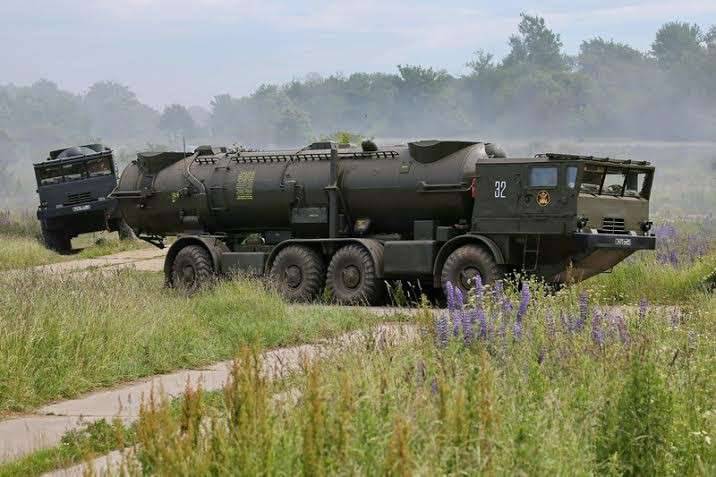
Complex "Redut" on the march. Photo Arms-expo.ru
Another element of the anti-ship operational-tactical complex "Redoubt" was to be the control vehicle. A radar station was installed on the vehicle chassis to monitor the water area and search for targets, as well as the Skala 4P45 control system. Such a command post was to track targets and control the launch of the rocket. In addition, the task of the Scala operator was the identification and identification of targets, as well as their distribution between missiles and the issuance of data on launchers.
The following organizational structure was proposed. The battery of the Redut complex included eight launchers and transport-charging machines, as well as a control center and various means of support. Batteries should be combined into battalions, battalions - in brigades. At the brigade level, it was proposed to use additional radar tools that monitor the situation and issue the initial target designation to battery systems.
According to the principles of operation, the Redut complex with the P-35B missile to some extent resembled ship or underwater systems with similar missiles, but it had some differences. Arriving at the specified position, the calculation of the complex had to produce deployment. The preparation of all the facilities of the complex for combat work required about one and a half hours. After this, the complex could conduct combat operations and attack enemy ships.
The control vehicle with the Scala system and its own radar station had to monitor the situation in the covered area. Her task was to search for enemy surface ships representing the danger. The possibility of obtaining target designation from other means of detection, including from airplanes or helicopters, was also envisaged. When a target was detected, it was accompanied by a definition of nationality and danger. After deciding to attack, the battery management machine was supposed to transfer data to the launchers and give the command to fire.
In preparation for the launch of the rocket, the launcher had to occupy the indicated position and lift the container to the starting angle of elevation 20 °. After the ascent, the covers were opened, ensuring a smooth release of the rocket and the emission of gases from the starting engine. On command from the machine, the rocket had to turn on the starting engine and leave the container, receiving an initial impulse, picking up speed and rising to the required height.
In accordance with the entered flight mission, the P-35B rocket had to go independently to the target area, using the existing inertial navigation system and radio altimeter. Depending on the calculated route, the rocket could fly at an altitude of 400, 4000 or 7000. After entering the target location, the rocket had to turn on the active radar seeker and “inspect” the water area. Data from the radar system should be transmitted to the control machine, the operator of which received the opportunity to study the situation and select the target. After that, the GOS seized the target and independently launched a rocket at it. The last leg of the flight took place at an altitude of 100 m, which made it possible to reduce the probability of detection and interception. The missile capabilities made it possible to destroy targets at ranges up to 270 km. The high-explosive warhead ensured the defeat of single targets, and the special one could be used to destroy group targets.
The project of the coastal missile complex "Redoubt" with the P-35B missile was developed by the middle of the 1963 year. In the fall, testing of the new system began. The first two test launches were considered unsuccessful. It was found that the new marching turbojet engines can not yet fully cope with their work. Were also identified problems in the operation of electronic systems. Because of this, the tests had to be interrupted to carry out the refinement of the complex. The result of the problems at the first test was a serious delay in the work. The Redut complex was adopted only in August 1966.
For various reasons, the delivery of new systems to the troops and their further development was noticeably delayed. The first unit, armed with the Redoubts, began a full-fledged service only in 1972. According to reports, the Baltic coastal missile troops were the first to receive these complexes. fleet. By the beginning of winter 1972, the 10th separate coastal missile regiment, armed with systems of the previous types, was transformed into the 1216th separate coastal missile division and equipped with Redut complexes. In the fall of 1974, the division was reorganized again, and now it has become the 844th Separate Coastal Missile Regiment (OBRP).
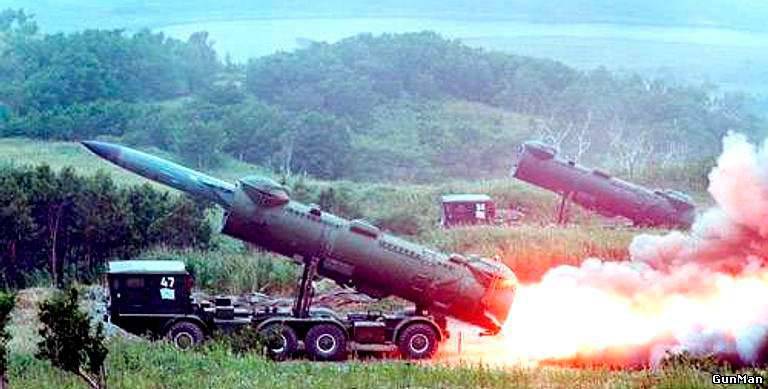
Shooting from a different angle. Photo Armedman.ru
Later, the re-equipment of the missile units of the coastal forces of other fleets began, accompanied by the mass production of Redut complexes. According to reports, by the end of the eighties, coastal missile forces and artillery of the Soviet Navy had 19 battalions of the Redut complex. Most of all such systems (6 battalions) received the Baltic Fleet. The Pacific and Black Sea fleets deployed five battalions, the Northern - three. It should be noted that the Northern and Black Sea fleets were comprised of the Utes missile systems, which can be considered the stationary analogue of Redut. Each Cliff complex had eight launchers for the P-35B missiles.
In the course of their service, all units armed with P-35B missiles repeatedly participated in combat training activities and carried out missile launches for conventional purposes. Of particular interest are the tasks performed by the missile regiment of the coastal forces of the Black Sea Fleet. Several times he received an order to advance to the territory of friendly Bulgaria and take firing positions there. Such a redeployment of launchers allowed the shelling of a large area, which included sections of the Black, Aegean and Marmara seas, as well as the Dardanelles.
Initially, coastal missile systems "Redoubt" were intended only for the armed forces of the Soviet Union and export deliveries were not provided. However, after the appearance of newer systems with enhanced characteristics, Redoubts began to be exported. According to reports, a number of such systems were sold to Vietnam, Syria and Yugoslavia.
In 1974, the modernization of the P-35 rocket was launched, affecting all the complexes with its use. In order to improve the performance of weapons, the development of the Progress project 3М44 began. From the base P-35, such a rocket should have been different with a new starting engine and a seriously redesigned control system. The latter differed by increased noise immunity and selectivity of action. To further enhance the effectiveness of the rocket, the final low-altitude portion of the flight was increased.
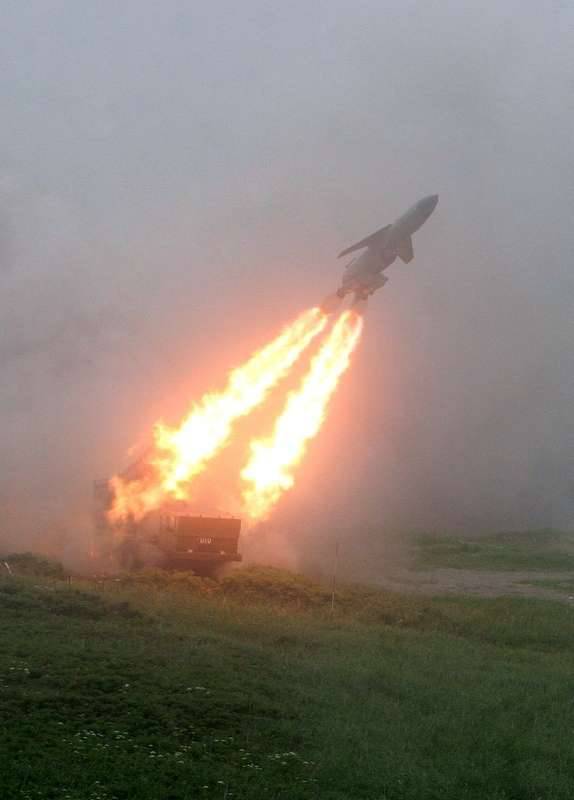
The work of rocket boosters. Photo Pressa-tof.livejournal.com
The 3М44 rocket was commissioned in the 1982 year. By this time, mass production was launched and deliveries of missiles to the troops began. This weapon was intended for use as part of the Redut complex, and could also be used by the existing P-35 carrier ships. The appearance of the new missile had a positive effect on the combat effectiveness of all the missile systems using it, including the Redut coastal system.
Despite the appearance of a number of new coastal missile systems, the Redut system still remains in service and solves the problem of protecting the coast from enemy ships, complementing newer complexes. Operation of such complexes will continue for some time, after which they are likely to be removed from service because of moral and physical obsolescence.
The coastal missile complex "Redoubt" was adopted half a century ago and all this time it protected the sea borders of the country from the attack of a potential enemy. Like any other systems, Redut at the time of its appearance was distinguished by high performance and made it possible to solve all the tasks with high efficiency, but over time it became outdated and gave way to newer and more advanced systems.
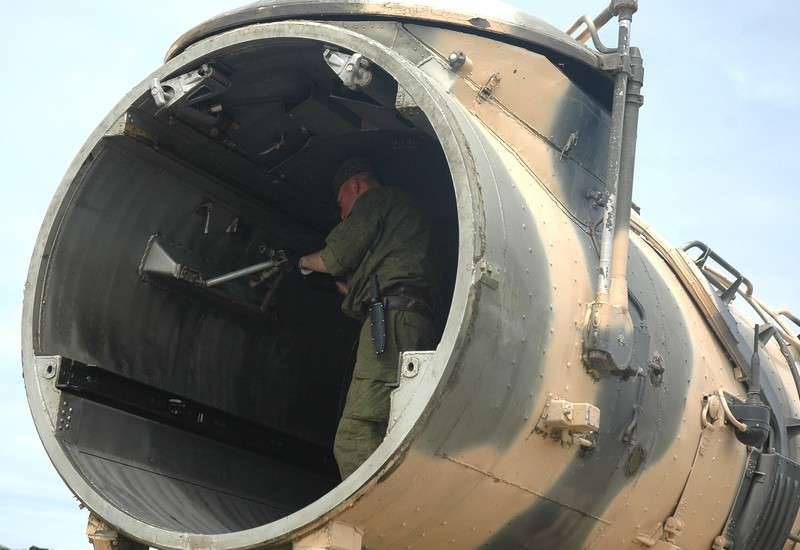
The start-up crew checks the container after launch. Photo Pressa-tof.livejournal.com
During its appearance and over the next few decades, the Redut complex with the P-35B rocket, and then with the 3М44, had several important advantages. He had the ability to attack targets at ranges up to 300 km and could deliver to the target a combat unit incapacitating an enemy ship (high-explosive) or a ship connection (special). The combined guidance system with the definition of the target by the operator made it possible to distribute targets between several missiles, including directing several missiles at one enemy ship. The use of external target designation allowed to increase the size of the controlled area.
However, there were also disadvantages. Over time, the P-35B rocket ceased to meet certain requirements. From the newer models, it differed in too large dimensions, because of which the self-propelled launcher could carry only one missile. Also, due to the large size of the launch container, the self-propelled launcher does not have its own means of target detection and fire control, which requires additional machines with similar equipment. In addition, Redut takes too much time to deploy.
Despite the incomplete compliance with the requirements of time, the Redut coastal missile system still remains in service, although it is giving way to newer systems that are characterized by enhanced performance and greater efficiency. Whether new complexes will be able to compete with “Redoubt” in service life - time will tell.
Based on:
http://rbase.new-factoria.ru/
http://warships.ru/
http://bastion-karpenko.narod.ru/
Shirokorad A.B. Weapons of the domestic fleet. 1945-2000. - Minsk: “Harvest”, 2001
Photo report from the exercises of the coastal forces of the Pacific Fleet with firing of the Redut complex:
http://pressa-tof.livejournal.com/28744.html
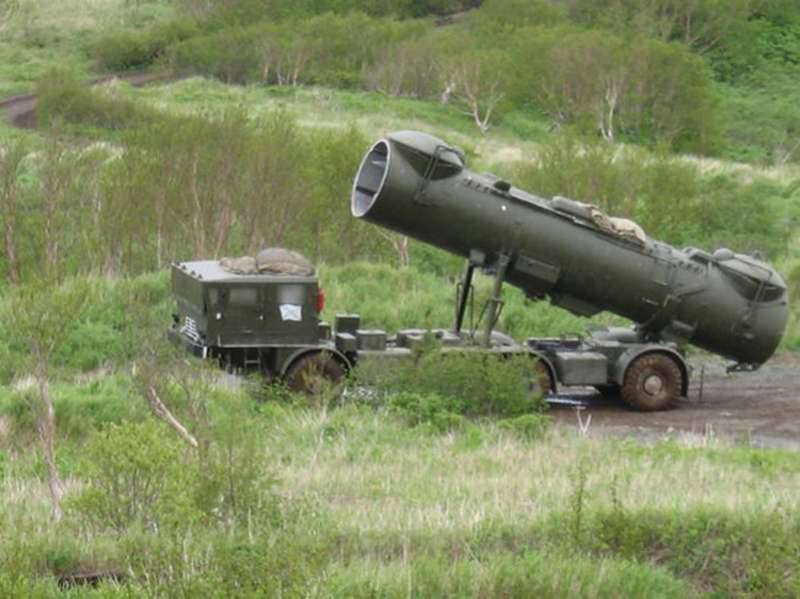
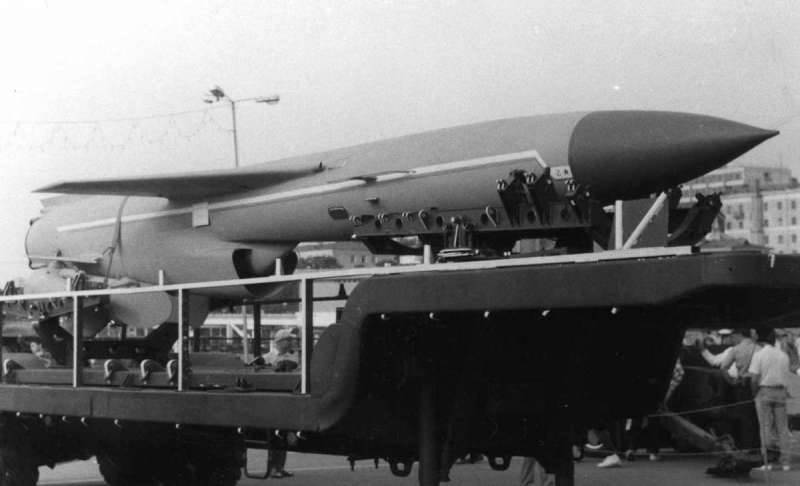
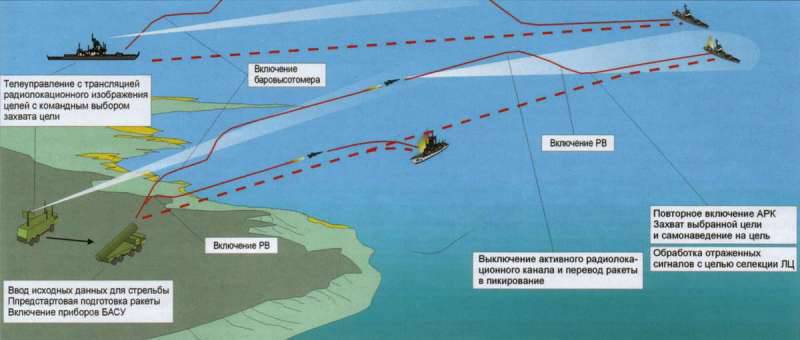
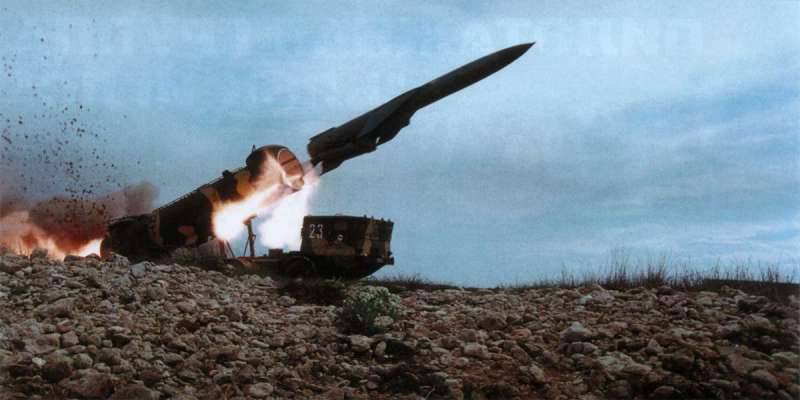
Information